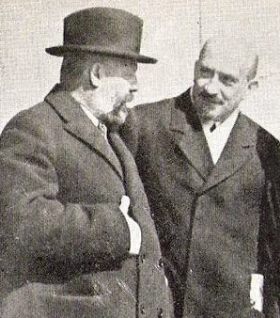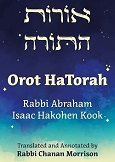During a session of the 19th Zionist Congress in Switzerland, the delegates received the bitter news: Rabbi Abraham Isaac HaKohen Kook, the Chief Rabbi of Eretz Yisrael, had passed away earlier that evening in Jerusalem. Overcome by grief and mourning, the session was brought to an early close.
When the assembly reconvened, Dr. Chaim Weizmann invited Menachem Ussishkin, a respected Zionist leader and the president of the Jewish National Fund, to say a few words in honor of the beloved Chief Rabbi. Below are excerpts from Ussishkin’s eulogy at the Congress.

Today, the Jewish nation is cloaked in deep mourning. One of the preeminent scholars of our generation has departed.
However, I will not speak about his greatness in Torah. The speaker after me, Rabbi Meir Berlin, will speak of this. I will speak, not of the brilliant scholar, but of the man.
The first time I heard his name was from that extraordinary luminary of our generation, Hayim Bialik. After Bialik’s first visit to Eretz Yisrael, he gave me a report of everything he saw. Yet his greatest enthusiasm was reserved for a certain Jew he had met, then rabbi of the small town of Jaffa. He told me wonders about this man’s wisdom, his Torah and breadth of knowledge, and his tremendous expertise — not only in Torah, but also in the latest philosophies. And over all of this, Bialik added, hovers a towering personality in its depth, love, and dedication, and in its approach toward the new phenomena in the world.
When I made my second trip to Eretz Yisrael, I knew that I must seek out this man whose fame precedes him. When I met him, I realized that Bialik’s description was accurate. Rav Kook was a fountain of ideas — brilliant, sparkling ideas that touched upon every facet of life. When you spoke with him — or more precisely, when he spoke, for it was impossible to have a conversation with him, he would always lead the conversation, while others would listen and absorb — you would be exposed to such a wealth of ideas and views that you often struggled to fully grasp their depth. You could not help but be enthralled with the brilliance of his ideas and the beauty of his imagery. After conversing with him, you invariably left the room with some fresh perspective, some new concept, or some novel insight, regardless of whether you agreed with him.
Even though his views on life, and especially regarding our national life in Israel, were original and dazzling, Rav Kook remained with both feet firmly entrenched in our ancient traditions. He did not waver a hair’s breadth from the tenets of our fathers and ancestors. Yet he possessed a radically different approach on how to bring understanding of this tradition to the new and changing world that confronts us.
First of all, there must be a profound soul-connection between the older and younger generations. His admiration for youth in general, and particularly the youth living in Eretz Yisrael — youth thousands of miles removed from his own worldview — was like a father’s understanding of his son, a father who wishes to guide his son and draw him near with insight and love.
Many of you are familiar with his remarkable response to a prominent scholar, a rabbi who criticized him for his cordial relations with the anti-religious youth. “How can you join forces with these people in common causes?”
The Rav responded by noting that the Holy Temple had separate courtyards. Some areas were only for priests; others were for Levites, or regular Israelites, or women. And there was one place of utmost sanctity: the Kodesh HaKodashim, the Holy of Holies. There, only the High Priest was allowed to enter, and only once a year, on the holiest day of the year.
All this was the case when the Temple was standing. Then there were separate areas for each sector of the nation, and each person knew where he was allowed and where he was not allowed to enter.
“However,” Rav Kook continued, “what do you think it was like while they were constructing the Temple? Then there were certainly no barriers. The workers moved freely into any area that required their skills. Even into the Holy of Holies.”
Nowadays, the Rav concluded, we are building “the Third Temple.” We are in the process of building. There are no — and there must not be any — barriers between the younger generation and us, between the religious and the secular. We are all busy with one project; we are all working toward one goal. First, let us build this Temple. Afterward we may discuss our differences ...
That was Rav Kook’s philosophy, from the first day that he arrived in the country, until his final day.
(Stories from the Land of Israel. Zichron Re’iyah, pp. 248-250.)





